Taking a morning train from Frankfurt, I got off at a small stop called Kleinheubach. From there, it's a quick bus transfer up into a small valley, to the quiet town of Rüdenau . Any doubts about going the right way disappeared as the bus passed along the length of the distillery, 'St Kilians' standing out against the whitewashed walls in large black letters .
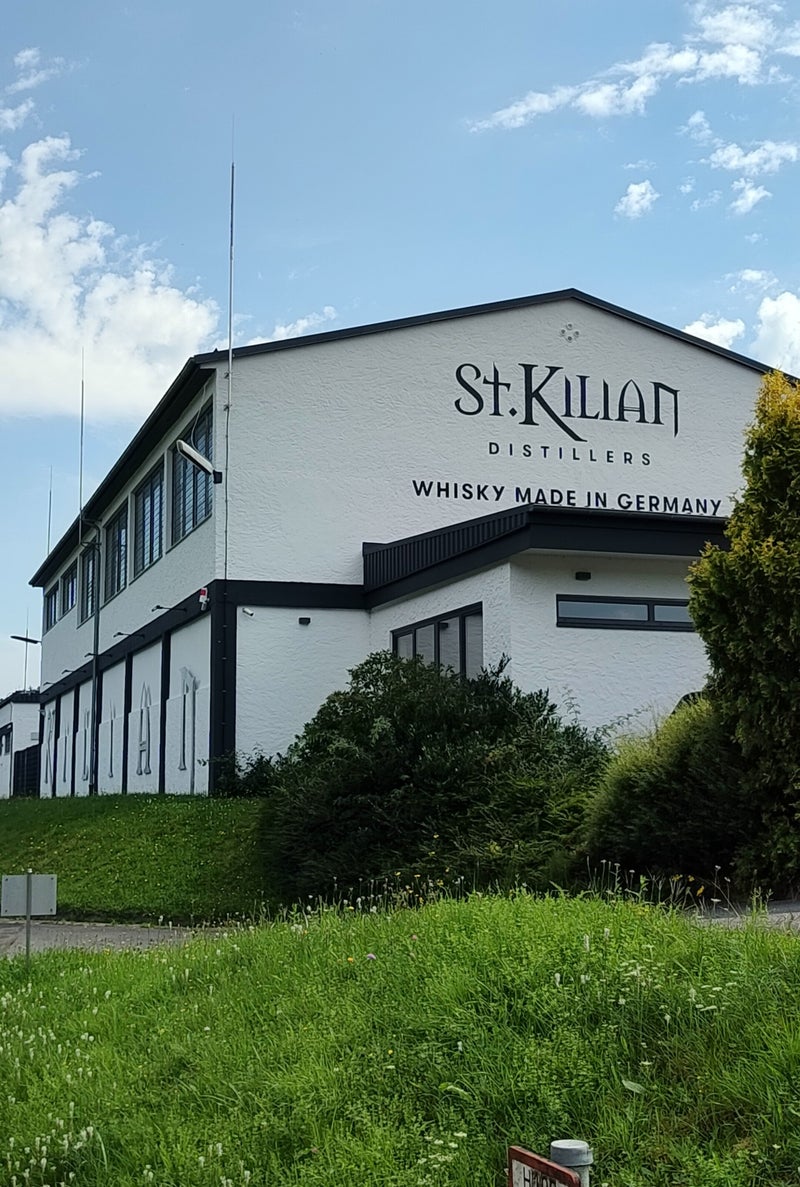

NB. If you visit Rüdenau this way, the bus stop in town has a little leave-one-take-one library, but otherwise the town has few businesses open
The Overview
St Kilian (named for the local area's patron saint) is one of Germany's biggest whiskey distilleries. While some new facilities will likely overtake this, St Kilian's 300,000LPA output is enormous by continental standards. For reference, in Scotland that's only as much as Eden Mill, one of the country's smaller producers. In fact, St Kilian claims to be the biggest single malt distillery in Germany at the moment.
After the first ideas germinated in 2012 (following a meeting from David Hynes of the Irish producers Kilbeggan ), production started here in 2016 after this building was converted from an old suit factory. Like Slyrs, it was notable for being founded as a single malt whiskey distillery . No schnapps, no conversion from other spirits, no gin first - just straight into single malt.
I think St Kilian is one of the first continental distilleries - perhaps the only one - where you can walk around and feel like you're in a Scottish one . The black and white walls, the 70s' era interior, the valley setting… Whether that's a good thing or not depends on your view of what 'European whisky' or 'German whisky' should be.

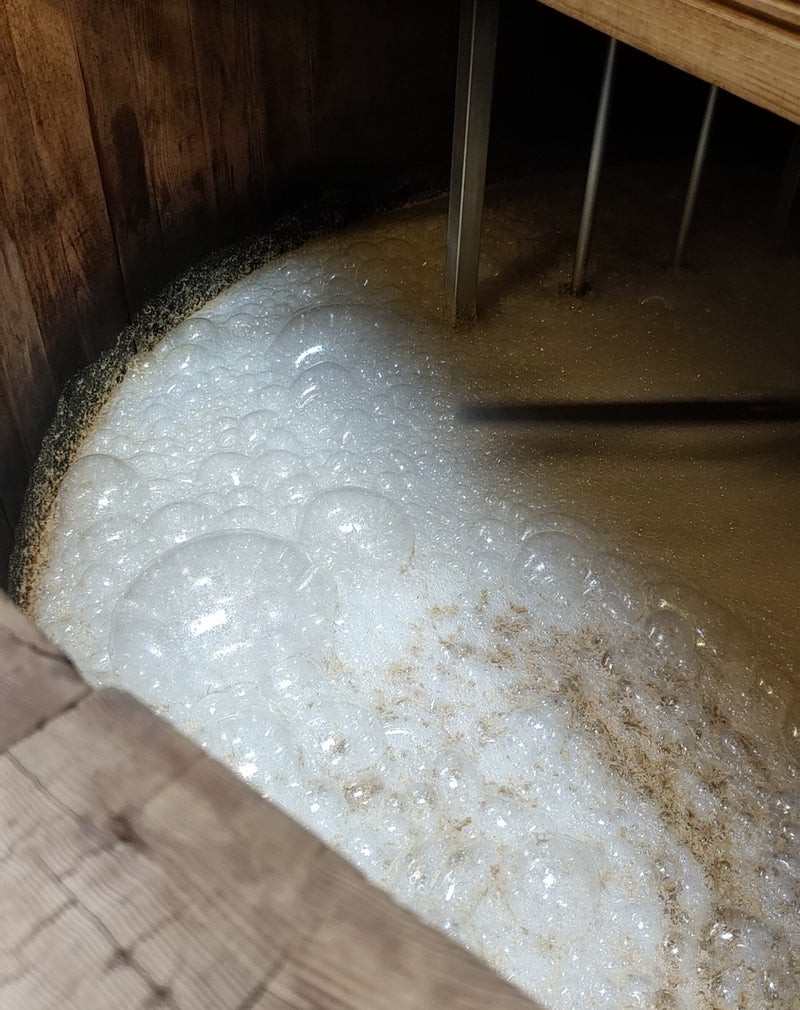
However, we’re not just in Germany - we’re in Bavaria, albeit on the opposite side from Slyrs. You’re so far north that you forgot about being in Bayern until all the distillery staff greet you with ‘Servus!’.
I was shown around by Stefan, who did a fantastic job. For once, I *started* the tour with a dram. A classic light single malt with an apple-y nose, made from married bourbon and sherry maturations. Aged around five years, it's non chill filtered and around 46% ABV. The mouthfeel is also light and sweet, a touch of pepper and pine wood coming through on the finish.
There are two main kinds of St Kilian: the Classic range and the Signature range. Something notable about St Kilian as one of the larger European distilleries is their continuous experimentation. You might think that economies of scale would drive them to focus on a limited range in large quantities, but St Kilian tinkers with everything from batches of dark roasted malt to over 350 different types of cask!


The Details
- 40/60 split of peated/unpeated spirit production
- Unpeated malt from Weyermann in Bamberg
- Peated malt imported from Glen Esk, peated to a heavy Islay-style level
- Some special editions are higher, e.g., the 91ppm Judas Priest edition
- 60-100 hour ferment using M1 yeast
- Wood-wrapped steel mash tun
- The water is just local tap water (no pretence about magic water, nice!)
- 4 Scottish Oregon pine washbacks (10,800L), chosen to allow bacteria and flavours to work their way into the wood. Heat exchangers and mixing paddles prevent overheating and incomplete fermentation.
- 3 sparges from 63C to 93 C, plus a fourth water which provides the subsequent first water
- Double distillation via 6000L Forsyths stills
- Indirect firing using 140C steam, slight ascending lyne arms with reflux condensers

The St Kilian style of spirit doesn’t go too far into feints. These Forsyths stills have a fat neck which reminds me of Glen Scotia - you can see this reflected in St Kilian’s distinctive bottles. Stefan explains that running the reflux condensers in the neck at full tilt makes the resulting spirit resemble something triple distilled. This spirit goes into the Signature 13, a peated dram aged in bourbon.
Casks & Ageing
As noted above, there’s a lot here. Bourbon is by far the most common cask at St Kilian - a different story from my previous distillery visit at Hercynian! They don’t do many finishes here, preferring full maturation in a single cask. Cask no.1 is still there, made from local German oak.


While many casks are in the distillery’s own integrated warehouse, many more are ageing in an old American munitions bunker up in the hills, smoothing out the variations in local climate. Even in the warehouse on site, I felt the potent vapours in the air. The barrels on site include a range of private casks: €2-3000 for 30L if you fancy one, with all the bottling, labelling etc. that goes with that.
Their range includes a few mizunara casks, Brazilian amburana, and even balsa! While that last one looked like it was leaking, Stefan assured me this was mainly water coming out of the wood itself - something about the unique structure of balsa. I expected it to feel fragile or soft based on my past experience with balsa wood gliders, but it feels dense in barrel form for sure!



Remember Cask No. 1 being made from German oak ? The German oak casks here mostly come from Spessart , an area directly north-east of Ruedenau and therefore more local than you might think. A ceremonial cask engraved with a dragon design (as no. 8888 ) was also made from this type of oak. The weird oval barrel below is a fassglocke (bell cask) planned to be their 10,000th cask filled. As I'm rapidly learning, Stefan reminded me that German oak can be quite heavy or sour : it needs to be used in moderation.


St Kilian gets 4-6% angels' share annually , and the weather is hot enough to definitely see the ABV in some casks increase rather than decrease over time. One 30L cask ended up at nearly 75% ABV! The old munitions bunker keeps evaporation down to around 3%, for comparison. All this means that like many other continental distilleries, aging happens relatively fast here. Sampling some five year old spirit from a Hungarian oak cask at this point in the tour, I found wonderful sherry-like tannins with light fruit and fig notes shining through.
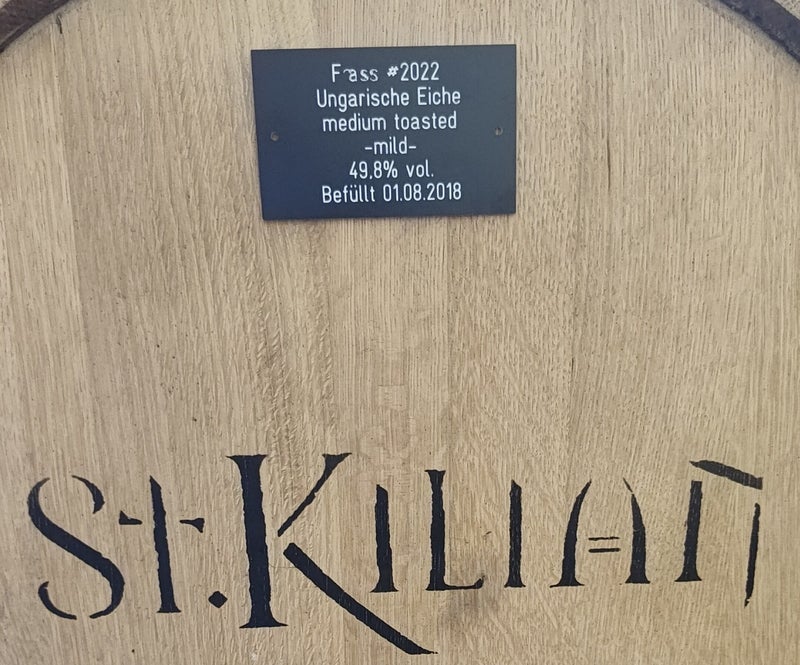
Tasting the Drams
Remember, St Kilian only makes single malt, and all their whiskeys are 46% ABV minimum. I was lucky enough to try some strongly peated CS whiskey from a 30L port cask - really rich! But here's a rundown of more regular bottles you could expect to get your hands on:
Their unpeated new make at 43% ABV has a sour smell at first which gives way to fresh-cut pear and a smooth palate. It was a bit disorienting starting with strong, fully aged whiskeys and then having the new make later, but I appreciate the generosity!
The Signature 10 is aged in bourbon and rum casks. I found it had hazelnut aromas, a little off note and almond intertwined. The rum cask comes out on the long finish, and the full effect of the dark malts used comes into play - Stefan likens it to dark chocolate.
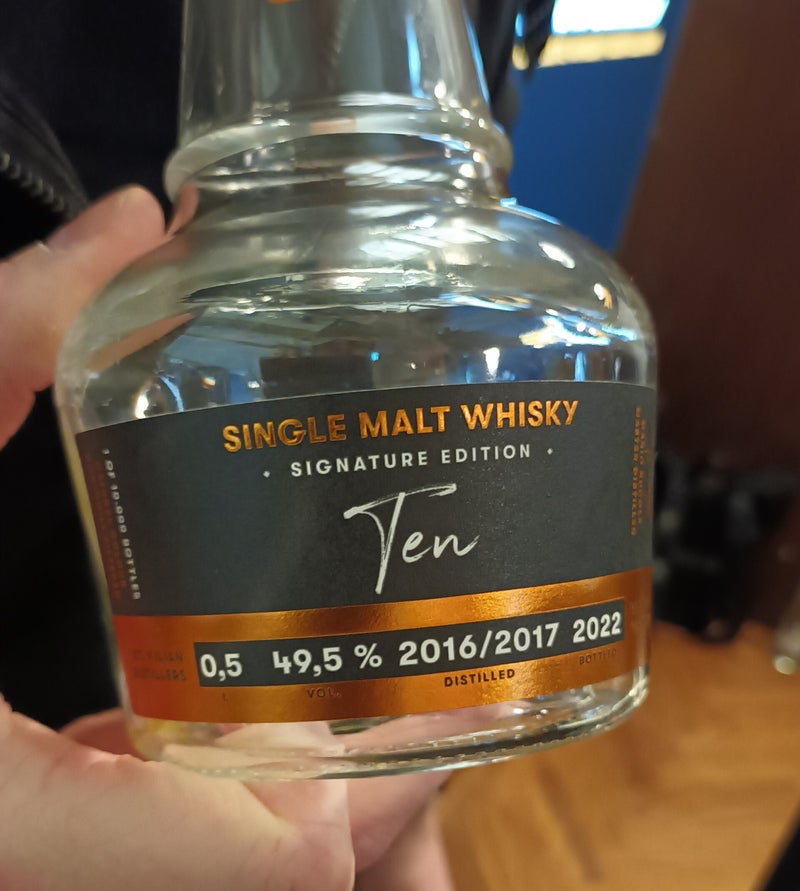

The Signature 11 is peated but distilled using maximum reflux, fully matured in Jack Daniel casks, and bottled at 46.2%. I remember the Jack Daniels cask used at Hinrichsens lending their single malt a lemon aroma , and this three year old German malt was also light, herbal, and floral. The cask and heavily refluxed malt combo was well chosen! Stefan says the peat just holds it back from going full-Irish whiskey style - now it's more like an Ardbeg (unsurprisingly given that distillery also uses similar condensers).
Signature 13 is aged in five different types of virgin wood! German oak, American oak, Black Locust, Chestnut, and Cherry . I've never seen locust wood ( robinia ) used for whiskey maturation before - it's an American tree now naturalized to all over the world. Locust wood is very hard, durable, and sustainable to grow, often used as a teak substitute. If it produces good flavors then it could be a great cask choice for more whiskeys in future… this dram is aged for three to six years and is almost dark as red wine. It has a herbal edge, and a peaty-meaty body - unlike anything I've ever had!
Their Terence Hill and Bud Spencer whiskeys are named for a popular film duo from the 60s and 70s. I'd never heard of them, but apparently they are household names in Germany, and the St Kilian CEO bought the name rights to make a pair of introductory, easy-drinking NAS blended whiskies. Interestingly, this is a multinational blend - some whiskey comes from St Kilian itself but the rest comes from Great Northern Distillery in Ireland!
St Kilian also makes a liqueur flavored with wild forest fruits (30% ABV) - I like the smell, but in honesty I didn't like the taste at all. We're here for the whisky, so let's just leave it at that.


Visiting St Kilians
I’ve already mentioned how I got to St Kilians, but what else can you expect from a visit? The fact that they are plenty big enough to run tours is helpful, of course: You can take tours Friday to Sunday. St Kilians has done some tastings in their ageing bunker, and now they regularly live stream online tastings to around 1500 people a time! Initially a COVID measure, it now works so well that it's a permanent part of their operation.
They also have a whisky room full of bottles from around the world. It certainly feels like a bit of ceremony getting the door unlocked and being allowed into this inner sanctum. St Kilians is not a one-trick pony. Just when you think you have it pinned down, you find something like this that gives you a welcome surprise!
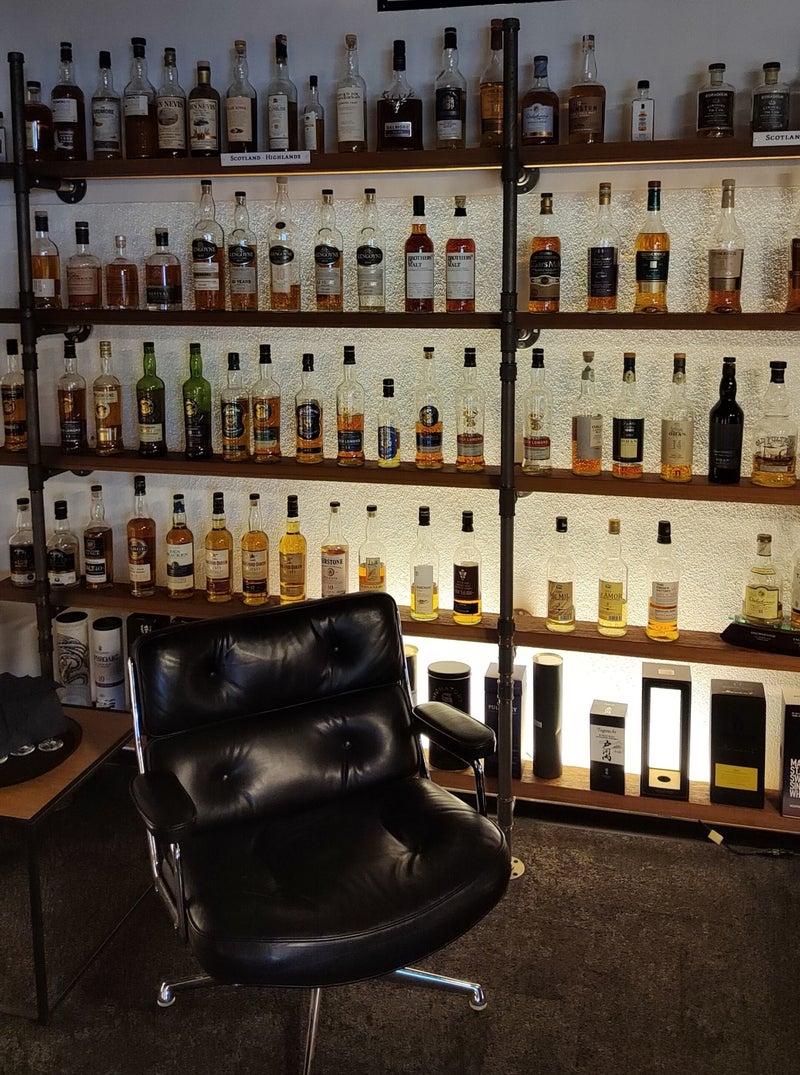

On 24th June 2023, they held the first St Kilian Whisky Festival at the distillery with 2,500 visitors. The last Saturday of June each year is also German Whisky Day, so these two events are (deliberately, I suspect) close together. Take advantage of this for 2024!
Where does St Kilian sit within the world of German whisky? Certainly they are one of the more recognisable German whisky names now, comparable to slyrs in many ways. However, they seem more self-consciously “German whisky” producers, while Slyrs make a point to say ‘Bavarian’ whisky. There’s a drive to compete directly with Scottish whisky, Stefan says, and a drive to show that Germany is not only a nation of schnapps-makers.
The Take-Away
For now, St Kilian is expanding rapidly but still mainly available in Germany and neighboring countries. I really recommend visiting the area as much as the distillery, just as you would in Scotland. In summer, the valley around Rüdenau was gorgeous, and the red sandstone of Miltenberg just down the hill reminded me of Scotland.
In the future, St Kilian plans to have 10 to 12 year old expressions available. For now, try some of the Signature and Classic options - see if this is a German whiskey that's right for you! And keep an eye out for it in EuroWhisky tastings…

The church of Rüdenau


Add comment
Comments